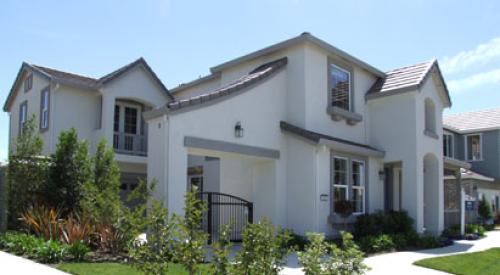Any semblance of average in the state of the nation’s housing is being pulled apart by two extremes: robust construction to met demand for move-up products targeting upscale buyers and the dearth of affordable rental and entry-level housing, particularly for Millennials who are slow to form their own households. However, the housing sector has shown enough momentum to be a growth engine for the U.S. economy, according to The State of the Nation’s Housing report released by the Joint Center of Housing Studies of Harvard University.
The housing sector should average at least 1.6 million starts a year over the next decade when factoring in an expected increase in households and the need to replace older units and meeting the demand for vacation homes and other uses. Single-family starts and completions in 2015 reached their highest level since 2008 at 715,000 and 647,000 units respectively. Single-family construction is set to expand in 2016 with permits during the first four months already increasing to a seasonally adjusted average of 730,000 units. Multifamily activity grew more than 10 percent for the fifth straight year reaching a 27-year high of 397,300 units. For the fourth consecutive year, multifamily units accounted for more than 30 percent of housing starts compare with averaging 20 percent between 1990 and 2010.
While the increase in rental demand is coming from all age groups, income level, and household types, most of the new apartments were luxury units built for the high end of the market. The median asking rent for market rate multifamily unit built in 2015 was $1,381 per month, more than 70 percent higher than the overall median contract rent for apartments. Sales and prices for single-family homes posted strong growth, with 2015 new home sales jumping 14.6 percent to 501,000 units and existing home sales increasing 6.3 percent to 5.3 million units. Median home prices rose 6.6 percent in 2015, which helped lift one million homeowners out of negative equity. However the most affordable tiers of houses were the least available to find as the stocks of bottom- and middle-value tier units shrank by more than 38 percent between 2010 and 2015 and by 9 percent in 2015 alone.
“Tight mortgage credit, the decade-long falloff in incomes that is only now ending, and a limited supply of homes for sale are all keeping households, especially first-time buyers, on the sidelines,” Chris Herbert, managing director of Harvard’s Joint Center, said in a statement. “And even though a rebound in home prices has helped to reduce the number of underwater owners, the large back log of foreclosures is still a serious drag on homeownership”
Currently U.S. home ownership is at it lowest point in half a century. Although forfeitures through foreclosures slowed considerably and the share of loans that are seriously delinquent have declined from the start of the housing crash in 2007 through 2015, delinquent mortgages still are nearly double the average seen in the first half of the 2000s. Given the current rate of recovery, foreclosures are likely to keep downward pressure on ownership for the next two years, the report says.
While credit standards could loosen in the near future, the rising tide of student loan debt will have a dampening effect on ownership. The report cited Demand Institute and Fannie Mae surveys to note that the appeal of homeownership has not its luster, and the allure of the American Dream is very much alive. But the near-term direction of homeownership will depend on whether more households can finance a purchase in the face of headwinds created by a backlog of homes in foreclosure, tight credit, weak income growth, and impaired credit histories.
Homebuilders have been licking their chops at the prospect of Millennials, people born between 1985 and 2004, becoming a huge pool of buyers. But while the number of adults under age 30 increased by 5 million, the number of households in that age group rose by just 200,000. If young adults started households at that same rate as they did in 2005, this age group would have 1.7 million more households today. The numbers suggest that household growth eventually will boom, but the need for affordable housing is urgent.
“The question is not so much whether families will want to buy homes in the future, but whether they will be able to do so,” says Herbert.
The limited stock of affordable homes is keeping first time buyers on the sidelines. The variables on the supply side suggest that more affordable housing will not be coming to the rescue in the short term. Local land use regulations and zoning requirements can inhibit the construction of affordable housing, particularly in expensive metro areas. The report noted a 2008 study by Harvard’s Rappaport Institute for Greater Boston found a one-acre increase in a local town’s minimum lot size was associated with a 40-percent decrease in housing permits. A 2015 Urban Land Institute report found that land costs in a hot urban market could add as much as 25 percent to total development costs for a high-rise, mixed income project with affordable units. In New York, the Citizens Housing and Planning Council estimated that the prevailing wage requirement in 2011 could raise development cost by 25 percent.
Labor shortages are another headwind that could restrain construction activity. More than 2 million workers left the industry during the Great Recession, and only 40 percent of workers who lost those jobs between 2006 and 2009 had returned, according to Census Bureau analysis. To rebuild this diminished workforce, the report recommended that the construction industry reevaluate the composition of its labor force since a quarter of workers in the trades are foreign born and the future of immigration policy is uncertain. Also women, which compose just 3 percent of trade workers, are a largely untapped labor pool.













